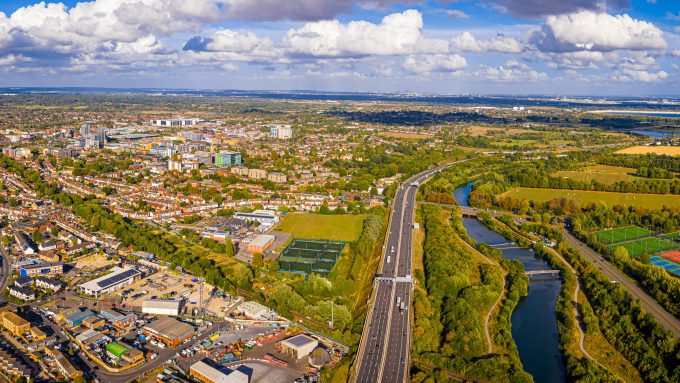
The road to net zero for UK cities

Across the UK, mayors and city leaders are on the front-line in the fightback against climate change. Many have declared ‘climate emergencies’. And, as the recently formed UK Cities Climate Investment Commission (UKCCIC) has discovered, there’s no shortage of potential investors available.
in July 2021, UKCCIC was established between the Connected Places Catapult (CPC), Core Cities UK, and London Councils - collectively covering the UK’s 12 largest cities. The initiative brings together the low carbon investment plans across all of the UK’s largest cities, estimated at a value of £206 billion. By developing a concept of blended finance, it drives investment across six different asset classes in cities.
This novel financing provides Net Zero funding across all sectors. See our City Investment Analysis Report (https://cp.catapult.org.uk/news/uk-cities-climate-investment-commission-report/) for further reading
The Challenge
Transitioning existing carbon intensive systems to Net Zero requires significant up-front capital, presenting unique challenges for the UK’s cities:
- Scale: The report estimates that £206 billion (in a range of £112-£334 billion) must be spent to achieve Net Zero pledges across the UK’s Core Cities and London Councils. This represents around one quarter of the UK population.
- Urgency: Rapid implementation required, to meet Net Zero deadlines and mitigate temperature increases.
- Complexity: The systemic transitions required within cities are complex and interlinking. These are unlikely to be achieved successfully through individual decision making.
- Just Transition: Already stretched social inequalities risk being degraded if the outcomes of policy changes are not appropriately considered.
Put simply, the aim of the Commission is to leverage the combined scale and clout of these cities to mobilise investment into low and net zero carbon projects across all of the UK’s largest cities, rather than each city going it alone.
What the Commission found is that, by aggregating the low carbon investment plans of the UK’s largest cities – worth an estimated £206 billion, it’s possible to create a more attractive and substantial proposition for investors.
So how do we translate all of this opportunity into effective investment? One solution is the concept of ‘blended finance’ to drive investment across multiple asset classes in cities (see table).
Research suggests there’s a strong case that the transition to net zero will be economically beneficial, yet the cash benefits from decarbonising UK cities are still too often not compelling enough for private investors alone.
So, by covering part of the up-front capital through grant-type, non-repayable funding, the remaining financing component of the capital can then be supported by the available income streams. The lower the cash returns, the more grant funding is required to encourage and subsidise the initial investment.
Long-term private finance is repaid using direct financial benefits (cash returns), while the long-term economic value of the investment can be used to support the blending of non-repayable grant-based finance.
We’re talking about a requirement to rebuild our cities, so that the very systems on which we depend – from energy to food, housing to transport – are decarbonised. And finance is the key lever that makes that possible.





